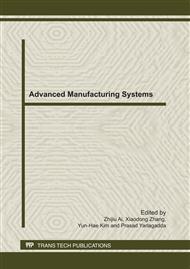p.299
p.313
p.317
p.321
p.326
p.332
p.336
p.342
p.349
Effect of Chemical Pretreatment on Cotton Stalk SCMP Bleaching Properties
Abstract:
Effect of chlorine, potassium permanganate and peracetic acid pretreatment on H2O2 bleaching properties of cotton stalk SCMP was studied in the paper. The results showed that brightness gradually increased with dosage of chlorine, however, the increase is small, and bursting index and breaking length firstly increased and then decreased as dosage of chlorine is great than 1.5%. Brightness of H2O2 bleached pulp decreased for potassium permanganate pretreatment, even change the bleaching sequence. Brightness of PaPP bleaching is the highest with peracetic acid pretreatment. Among the studied reagents, chlorine and peracetic acid can increase brightness of H2O2 bleaching, however, pretreatment with potassium permanganate can not improve bleaching properties. The brightness with CH3COOOH pretreatment is higher than that of chlorine pretreatment.
Info:
Periodical:
Pages:
326-331
Citation:
Online since:
September 2011
Authors:
Keywords:
Price:
Сopyright:
© 2011 Trans Tech Publications Ltd. All Rights Reserved
Share:
Citation:


